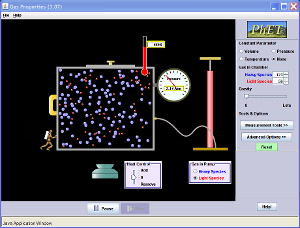6.7 starter 01 December 2011 19:37 Tell the person next to you…
1. If the field lines are close together, what does this tell you about the field?
2. If the field lines are widely spaced, what does this tell you about the field?
3. If the magnetic field lines are parallel to each other, what does this tell you about the field? Answers
1. The field is strong
2. The field is weak
3. The field is of a constant strength - a "uniform" field
6.7 28 November 2011 15:08
· 6.7 know how to use two permanent magnets to produce a uniform magnetic field pattern
· When the field lines are parallel, the field will be uniform
1. If the field lines are close together, what does this tell you about the field?
2. If the field lines are widely spaced, what does this tell you about the field?
3. If the magnetic field lines are parallel to each other, what does this tell you about the field? Answers
1. The field is strong
2. The field is weak
3. The field is of a constant strength - a "uniform" field
6.7 28 November 2011 15:08
· 6.7 know how to use two permanent magnets to produce a uniform magnetic field pattern
· When the field lines are parallel, the field will be uniform






































